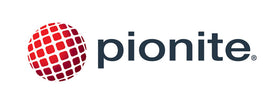What is PVC Edge Banding?
There are two main branches on the family tree of edge banding materials: natural wood veneer, and synthetic. Certain projects demand authentic wood for the visible edges, but many do not. On applications for which synthetic edgebanding is appropriate or necessary, many cabinet makers rely on PVC edgebanding as their go-to product.
PVC is a thermoplastic material used in countless modern products including plumbing pipes, house siding, wire insulation, and camping tents to name just a few. It can be used to produce edgebanding that is flexible, durable, highly resistant to moisture, and available in a variety of colors and textures. These characteristics make it a top choice for woodworkers, but like any material, it does have its drawbacks. Let’s take a look at some alternatives to PVC edge banding, and why you might choose them for your projects.

Alternatives to PVC Edgebanding
There is anever-growing variety of products available in the edge banding market. Here are the top alternatives to PVC Edge Banding.
Wood Veneer Edgebanding
Sometimes it is necessary to use real wood to finish the edges of your panels. Wood veneer edgebanding is often the only choice for premium quality work, lending a touch of sophistication that cannot be replicated by synthetic products.
Pros:
- Aesthetic Excellence: The look and feel of real wood is unmatched by any synthetic product
- Sanding and Staining: Veneer edge banding can be sanded to a sparkling finish, and the corners can be beveled or rounded. It can also be stained to beautiful match the tone of the panels.
- Easy Repair: If the edgebanding gets chipped, scratched, or dented, it can be repaired with filler and stain, unlike many synthetic products which may have to be replaced if damaged.
Cons:
- Expensive: Wood veneer generally costs more than synthetic options.
- Durability: More susceptible to water damage, scratches, and dents.
- Maintenance: May require periodic resurfacing and sealing to preserve throughout its lifespan.

ABS Edgebanding
Acrylonitrile butadiene styrene (ABS) is another thermoplastic used in many common products including certain plumbing pipes. Edgebanding made of ABS is popular, and has certain advantages and disadvantages when compared to PVC.
Pros:
- Environment: ABS is more easily recycled than PVC. It also is produced with less harmful compounds, and so when it is melted down for recycling or if it catches fire in a home, there is less pollution to the environment.
- Fire Resistance: More fire resistant than PVC.
- Easier on Tools: Softer and more flexible, making it more workable in edgebanding machines, and causes less wear on blades.
Cons:
- Solvent Sensitivity: ABS is less chemically durable than PVC, and can be damaged by the use of certain solvents.
- Price: ABS edgebanding generally costs more than PVC.
- Availability: Can be less readily available than PVC, and in a smaller variety of thicknesses and colors.

Melamine Edgebanding
Melamine is a chemical compound that has a wide variety of industrial uses. When combined with formaldehyde, it produces melamine resin. This resin is used to produce melamine-faced particle board, as well as melamine edgebanding and other building products
Pros:
- Matches Melamine Boards: If you are using melamine boards for your project, melamine edgebanding is the logical choice.
- Durability: Melamine is highly water resistant, heat resistant, and even fire retardant.
- Easy Cleanup: Melamine is well known for its hard and smooth surface, making it very easy to keep clean.
Cons:
- Limited Availability: Not as commonly used as PVC, and may be difficult to find in the right size and color.
- Brittleness: Susceptible to chipping and cracking, and may need to be replaced if this happens.

Metallic Edgebanding
Some suppliers have developed edgebanding made of thin strips of real metals (aluminum, steel, chrome, etc.) bonded to ABS or PVC backing, allowing it to be applied like any other edgebanding material. These products offer a stunning modern look to your projects.
Pros:
- Unique Aesthetic: This will truly set your project apart from the mainstream.
- Tremendously Durable: It’s made of metal!
Cons:
- Aesthetic Focal Point: This could be an advantage or disadvantage; for better or for worse, metal edgebanding will attract attention and require some design forethought.
- Cost: Can be among the priciest edgebanding materials

Conclusion
There are always more and more options available in the edgebanding market, but it is tough to compete with the materials we have discussed today. Each has its own set of strengths and weaknesses, and for every project there are many factors to consider. On the whole, PVC Edge Banding is the most versatile and inexpensive material, making it the first choice for many woodworkers. We hope that you have found this discussion helpful, and we wish you success in all your projects!



















